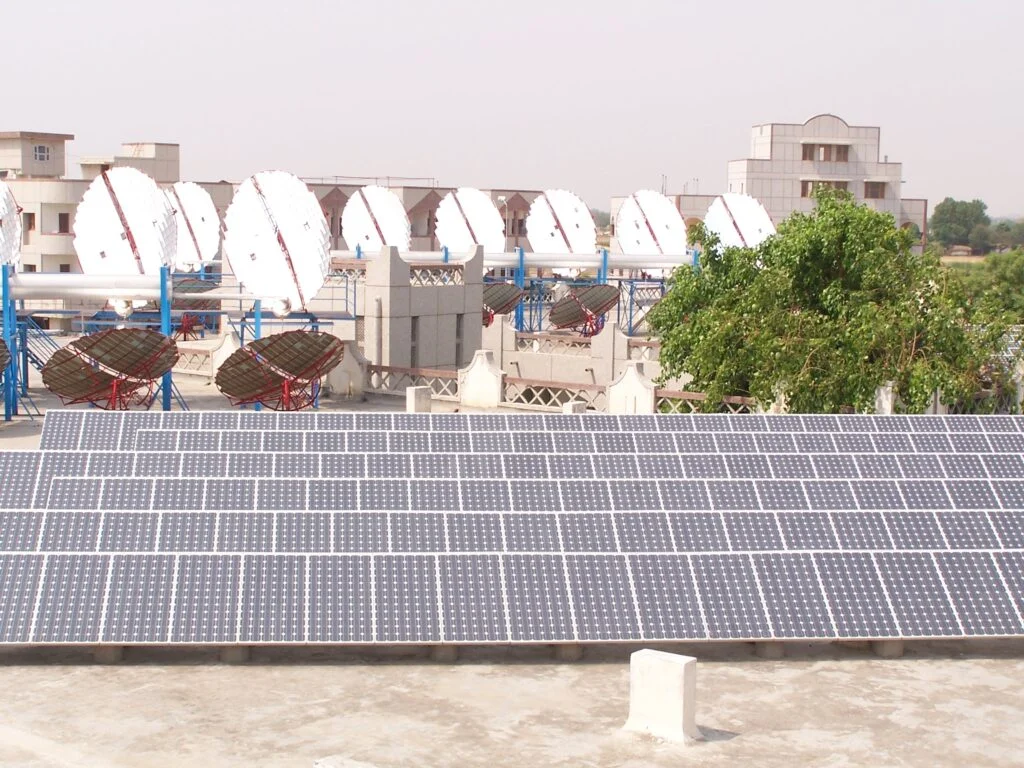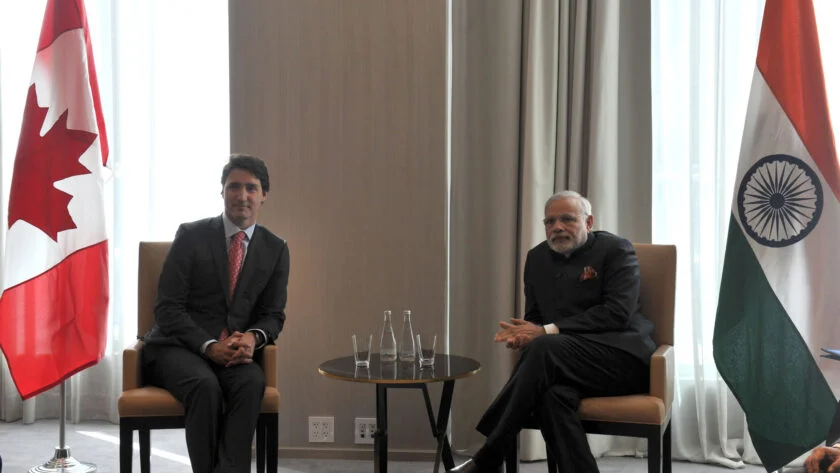India is back to re-embracing Free Trade Agreements (FTA) since the Modi Government came into power in 2014. The nation is being very country-specific this time. Canada is next on the list.
On 11 March, India and Canada agreed to officially re-start talks on a potential free trade deal. The objective is to strengthen the economic connection between the two nations.
The fifth Ministerial Dialogue on Trade and Investment (MDTI) discussed this issue. Indian Commerce and Industry Minister Piyush Goyal and Canadian Minister of Small Business, Export Promotion, and International Trade Mary Ng co-chaired the meeting. The two countries have agreed to negotiate an interim agreement or an early progress trade pact that immediately benefits both nations. While there is no deadline set for completing the interim agreement, official sources say six to nine months for finalising the pact. A more comprehensive Free Trade Agreement (FTA) will follow this.

5th India-Canada Ministerial Dialogue on Trade and Investment
Image courtesy- Twitter@Piyush Goyal
Both countries have resolved to move forward with the long-stalled FTA. This was formally known as India-Canada Comprehensive Economic Partnership Agreement (CEPA). The Indian commerce ministry stated that both sides are currently exploring an Interim Agreement or Early Progress Trade Agreement (EPTA) that might result in early benefits for both countries.
FTA’s Background:
Long-standing diplomatic ties exist between Canada and India. Shared values of democracy, pluralism and deep interpersonal ties are the pillars of this relationship. A developing network of official dialogues, agreements, memorandums of understanding, and working groups strengthens Canada’s and India’s profound cultural and political relations.
Canada was a founding member of NATO, and India was not. Nevertheless, trade links between the two countries have developed. Since India’s independence, the two countries have had a friendly and profitable trading relationship.
In the 1970s, the commercial connection between both nations had decreased. However, trade improved in the 1990s due to India’s Peaceful Nuclear Explosion. Following the financial crisis in Southeast Asia in 1997, Canada began focusing heavily on India. Canada then honed in on India, hoping to take advantage of the country’s vast trading potential.

Trade Relations
India is Canada’s 9th largest export market and 10th largest trading partner. Thus, India is a key market for the country. Canada’s commercial initiatives in India are towards India’s policy goals and industries in which Canada has a competitive advantage.
Priority Fields in the India-Canada FTA
The priorities in the trade between the two include the following:
- increasing conventional and nuclear energy exports, as well as clean and renewable energy technology
- assisting India in meeting its significant urban and transportation infrastructure needs by providing financing, equipment, technology, and engineering services
- improved education and skills training through increased coordination between Canadian and Indian academic and technical skills institutions
- increased exports of food goods and fertilisers to meet India’s food security needs
- commercial research and development to stimulate innovation in industries such as information and communications technologies

Comprehensive Economic Partnership Agreement
Canada has been consistently looking forward to investing in large and fast-growing economies, including India. India became the world’s sixth-largest economy in 2020. Also, it is usually referred to as the world’s fastest-growing significant market, with annual GDP growth rates consistently exceeding 7%. Canada had worked previously to progress negotiations on a Foreign Investment Promotion and Protection Agreement (FIPA) and a Comprehensive Economic Partnership Agreement (CEPA). The last complete round of CEPA negotiations between India and Canada took place in August 2017. It covered cross-border trade in products and services, e-commerce, telecommunications, sanitary and phytosanitary measures, and technical trade obstacles. Another stocktaking meeting between Indian and Canadian trade authorities was held in June 2021.

Their investments here are based on India’s growing workforce and consumer spending.
The primary interest sectors of Canadian companies include the following:
- Education
- Transportation infrastructure
- Life science
- Clean energy technology (integration of renewable energy/smart grid; carbon capture, use, and storage; and energy efficiency) and renewable energy
- Infrastructure development
- Natural resources
- Defence and security
- Value-added food products
- Mining, oil and gas
FTA to Reduce Custom Duty on Goods Traded
The ministers reiterated that the pact would assist in growing trade ties in products and services by harnessing potential spanning different sectors, highlighting current trade potential synergies between India and Canada.
“Both countries agreed to undertake intensified work concerning the recognition of Canada’s systems approach to pest risk management in pulses and market access for Indian agriculture goods such as sweet corn, baby corn and banana etc.”
Piyush Goyal.
The talks are part of India’s larger plan to strike “balanced” trade agreements with important economies and modify existing trade agreements to promote commerce. The movement gathered momentum after New Delhi withdrew from the Beijing-dominated RCEP discussions in November 2019.
The two sides stressed the significance of enhancing collaboration in domains such as medicines, critical and rare earth minerals, tourism, urban infrastructure, renewable energy, and mining, among others.

“They also highlighted the significance of strong people-to-people relations between the two nations in building the bilateral economic partnership, as well as the transit of professionals and skilled workers, scholars, and business travellers,” according to the statement.
Both countries agreed to step up their efforts to recognise Canada’s systems approach to pest risk management in pulses and market access for Indian agriculture products such as sweet corn, baby corn, and bananas. India’s merchandise exports to Canada increased by 25% to $3 billion in the 2020-21 fiscal year, while Canada’s increased by 10% to $2.6 billion.
Drugs and pharmaceuticals, iron and steel, marine products, cotton textiles and readymade garments (RMG), and chemicals are among the most important Indian exports to Canada. While pulses, fertilisers, coal, and crude petroleum are among the most important Canadian exports to India.
Way Ahead
Although the two countries have many complementary characteristics, such as their democratic nature and Commonwealth membership, India-Canada relations have failed to thrive.
However, Indian companies’ willingness to invest in Canada is mainly motivated by a desire to get into the vast US market, which continues to garner more attention. Canada is an excellent destination for skilled immigrants and a provider of agricultural products and energy resources in the popular Indian imagination. It is rarely a strategic partner.

Nonetheless, India’s economic potential, particularly investment prospects, has prompted Canada to regularly reassess the bilateral relationship’s economic dimension in its India policy.
“India must shift its focus away from politically divisive subjects to break the long-standing stalemate in its relations with Canada. New Delhi should also keep in mind that historical incidents impacting the Sikh community in Canada have progressively become part of the political debate in that country.”
As a result, it is desirable to establish a new cooperative framework that is more pragmatic. It should focus on mutually beneficial sectors like commerce, where opportunities abound and much work is still to be done.
Read more about the India-UAE FTA here!
About the Author
Akhilesh Dwivedi

Being an avid reader, Akhilesh loves to explore new developments in Defence Research & Development. He is a voyager and loves writing poetry. He is currently pursuing a PhD in Defence and Strategic Studies. He is an inquisitive and diligent soul hoping to make a change to reckon with. He is also affiliated with the Centre for Security Studies at Jindal School of International Studies as a Centre Associate. His main interests lie in Security Studies, Defence Technology, International Relations & World Politics







[…] Also, read the article on the latest India-Canada free trade agreement here! […]
[…] INDIA-CANADA FTA? SHIFTING THE FOCUS TO BALANCED TRADE NEGOTIATIONS […]